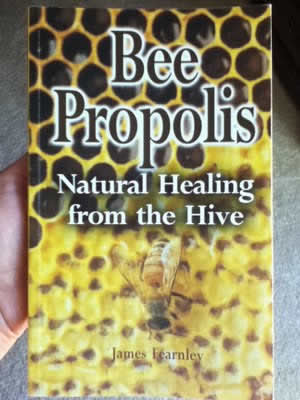Red Reishi mushroom (Ganoderma Lucidum) is a type of mushroom found in the coastal regions of China. In nature, it grows in densely wooded forests of high humidity and dim lighting. Reishi mushroom occurs in 6 different colors, but the red variety is most commonly used and commercially cultivated in East Asia and North America. Various researches have shown that red reishi mushroom modulate many components of the immune system such as the antigen-presenting cells, Natural killer cells, T and B lymphocytes.
Cancer Prevention and Treatment
Ganoderma lucidum is a proven powerful activator of interferon, interleukins, tumor necrosis factor, natural killer cells, T lymphocytes, tumor-infiltrating lymphocytes and lymphokine activated killer cells. Both in vitro and in vivo studies showed that the anti-tumor activities of Ganoderma lucidum polysaccharide are mediated by its immunomodulatory, anti-angiogenic, and cytotoxic effects. The experts of Chinese Academy of Sciences confirmed that the polysaccharides and triterpenes in Ganoderma lucidum are the critical ingredients to maintaining a physiological balance within the human body.
According to a study Bellarmine University; Ganoderma lucidum contain polysaccharides, strong compounds that may aid in the recovery of cancer tumors by inducing apoptosis, or programmed cell death. A 1999 test tube study found that reishi mushroom stimulated lymphocyte production in the immune system and had anti-tumor effects. The water extract and the polysaccharides fraction of reishi exhibited important anti-tumor activity in several tumor-bearing animals mainly through its immunoenhancing effect. A study reported in 2003 in Food Reviews International found that mice given reishi mushroom demonstrated signs of suppressed cancerous tumor growth. One study demonstrated that Ganoderma lucidum strongly inhibited the growth of sarcoma 180, with an inhibition rate of 95 to 98% at an interperitonial dosage of 20 mg/kg for ten days in mice.
Ganoderma Lucidum polysaccharides have high molecular weights of up to 1,050,000, which makes absorption by the intestines difficult. Vitamin C breaks down the high molecular weight polysaccharides to a molecular weight of around 30,000, in this way that they are much more easily absorbed by the intestines. As these are chain like molecules, the shorter sections of the chain have all the same properties as longer segments, however are much more easily absorbed through the stomach and intestines.
The dried powder of Ganoderma lucidum alters the expression of a number of genes, especially transcription factors, such as nuclear factor kappa B, and activator protein-1, according to a 2003 study reported in the Integrative Cancer Treatments. A study published in August 2003 in the Immunological Investigations, reported a important increase in NK (natural killer) cell activity in 34 cancer patients given reishi extract for 12 weeks. Evidence from an animal-based study reported in the July 2007 of Bioorganic and Medicinal Chemistry found that Ganoderma Lucidum compounds might suppress cell signaling processes involved in the development of prostate cancer. The complex interaction of anti-cancerous substances in Ganoderma lucidum has been shown to suppress progression and invasiveness of metastatic breast cancers, according to a study done at the “Cancer Research Laboratory, Methodist Research Institute“. Researchers reporting in the “International Journal of Oncology” stated that reishi is a “suitable herb for chemoprevention and chemotherapy of breast cancer.” According to scientists at the “National Cancer Center” in Japan, there was complete tumor elimination in approximately 80% of cancer-induced animals fed extracts from reishi, maitake and shiitake mushrooms. Compounds in each of these mushrooms enhance the tumor-fighting activity of Natural Killer Cells and improve antibody responses, but maitake mushroom seems to have the strongest and most consistent effect.
New studies in New Zealand show that a combination of Cordyceps and Ganoderma lucidum extracts had useful effects on the quality of life for some advanced cancer patients. Scientists believe that a mixture of the active components from different mushrooms maximizes the immune response by providing multiple stimuli to the body’s natural defenses. The active component in RSE (Reishi Spore Extract), Ganoderma lucidum is collected from just the spores of the plant; just 1g of spores can be collected from 1kg of the Ganoderma lucidum plant making RSE 75 times more potent compared with other reishi products. RSE stimulates IL-2, NK cell, interferon, may reduces radiation adverse effects and improves phagocytosis function. In one study performed in Japan and China, RSE was found to kill tumor cells by 83 %. A study at the “Fujian Hospital” was performed on 52 cancer patients with low levels of white blood cells. Results demonstrated an improvement rate of 1028/cc with an efficiency rate of 84 %. Also, Guangdong He Yuan Hospital treated 60 cancer patients with low white blood cell count.After therapy, levels improved up to 1428/cc with an efficiency rate of 81 %.
 An in vitro study found propolis to have a more potent cytotoxic effect against human lung adenocarcinoma (A549) and human fibrosarcoma (HT-1080) cells compared to 5-fluorouracil. A study reported in “Nutrition and Cancer” in 2003 revealed that propolis stimulated apoptosis and necrosis of lung cancer tumors in mice. According to a study reported in the Feb 2004 issue of the “American Journal of Biochemistry and Biotechnology“, propolis contains therapeutic compounds that can kill MCF-7, a breast carcinoma cell. In an animal-based study reported in 2005 in Veterinary Research Communications, scientists found that caffeic acid reduced the number of lung tumors in mice.
An in vitro study found propolis to have a more potent cytotoxic effect against human lung adenocarcinoma (A549) and human fibrosarcoma (HT-1080) cells compared to 5-fluorouracil. A study reported in “Nutrition and Cancer” in 2003 revealed that propolis stimulated apoptosis and necrosis of lung cancer tumors in mice. According to a study reported in the Feb 2004 issue of the “American Journal of Biochemistry and Biotechnology“, propolis contains therapeutic compounds that can kill MCF-7, a breast carcinoma cell. In an animal-based study reported in 2005 in Veterinary Research Communications, scientists found that caffeic acid reduced the number of lung tumors in mice.